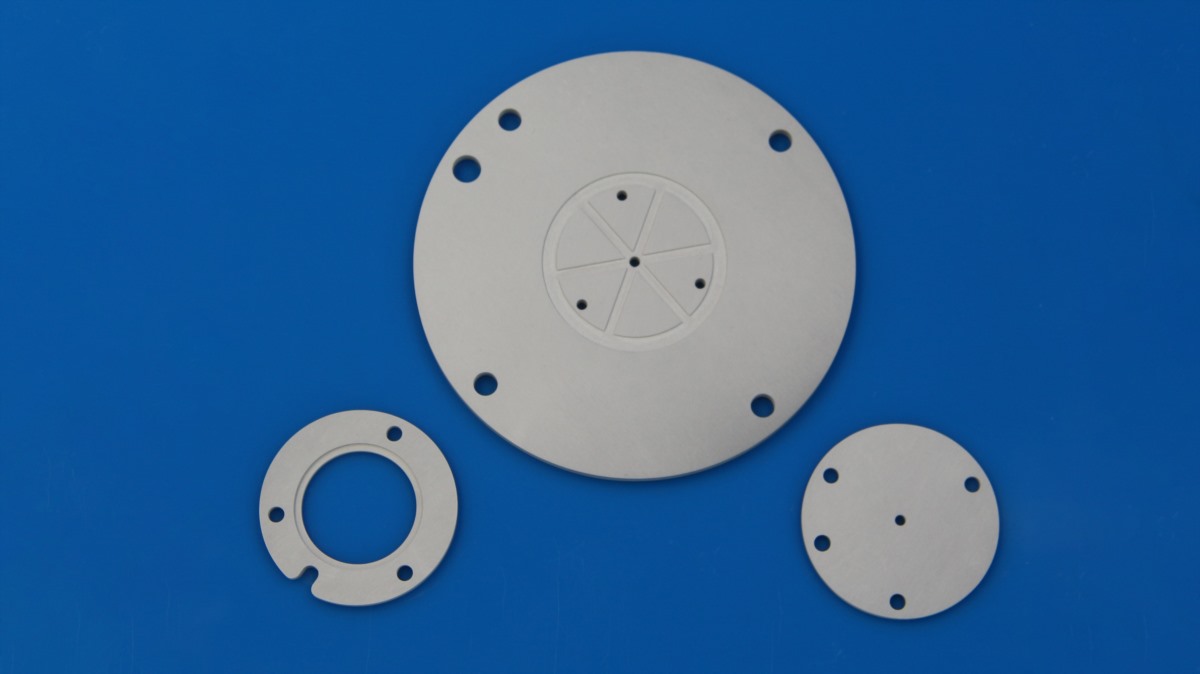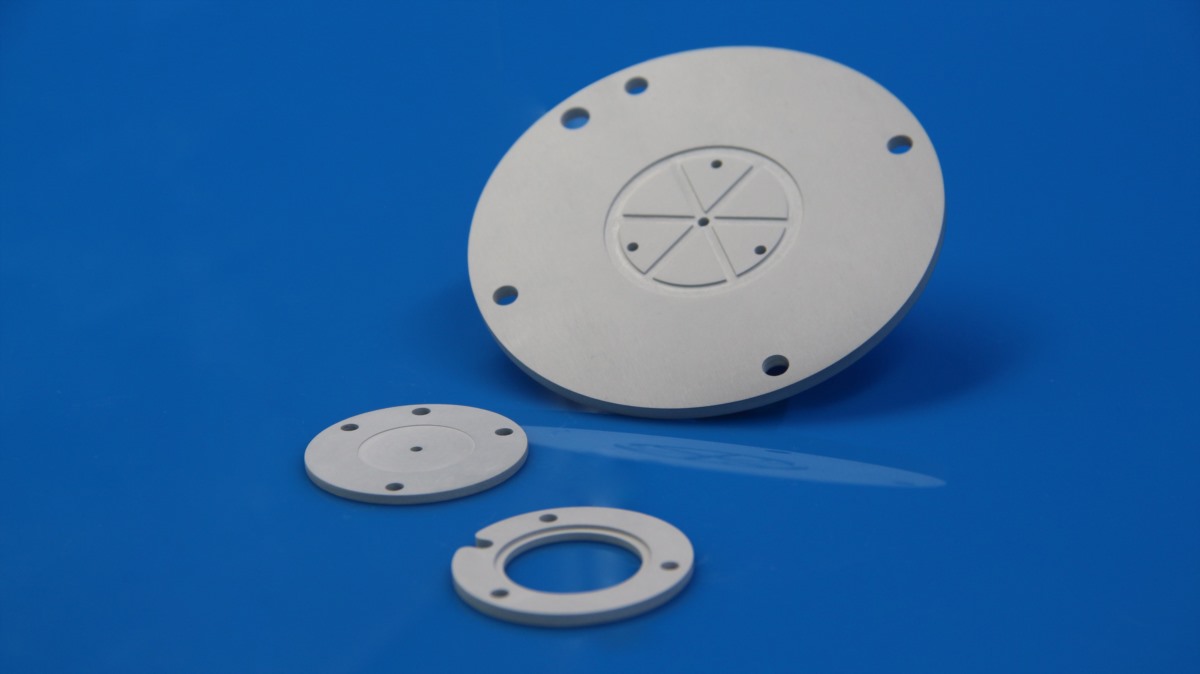
The ion source is a device that creates atomic and molecular ions, which is in the vacuum chamber. Aluminum Nitride (AIN)/Boron Nitride (BN) Composite has excellent electrical insulator, thermal conductivity, sealing ability to vacuum and hasn’t given off much gas. So it is plays an heat sinks and thermal transfer plate role in ion sources.
Material Advantages:
- High mechanical strength.
- High thermal conductivity.
- Low thermal expansion.
- Low dielectric loss.
- Excellent electrical insulation.
- High corrosion resistance–non-wetted by molten metals.
- Excellent Machinabilit–BN-AlN can be machined to high-precision complex shapes.
- It has excellent sealing ability to vacuum and hasn’t given off much gas.
- High-frequency wave properties, allow visible infra-red light to pass through easily.
Material Properties:
| Properties | Units | BAN |
| Main Composition | / | BN+ALN |
| Color | / | Greyish- Green |
| Density | g/cm3 | 2.8~2.9 |
| Three-Point Bending Strength | MPa | 90 |
| Compressive Strength | MPa | 220 |
| Thermal Conductivity | W/m·k | 85 |
| Thermal Expansion
Coefficient (20-1000℃) |
10-6/K | 2.8 |
| Max Using Temperature | In Atmosphere ℃ | 900 |
| In Inactive Gas ℃ | 1750 | |
| In High Vacuum ℃ | 1750 |
Applications
- Heat sinks
- Vacuum components
- Components where low dielectric constant and dissipation factor are required
- Parts and components where a low coefficient of thermal expansion is required
- Electronic components where electrical insulation and heat dissipation are required
- Electric propulsion discharge channels for Hall Effect Thrusters


 Enquiry
Enquiry